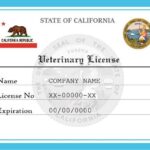Understanding intellectual property (IP) rights is crucial for businesses, inventors, and creators looking to protect their innovations. Among the various forms of IP, patents and trademarks often come up as essential tools for safeguarding unique creations and branding elements. However, these two terms are frequently confused, as they serve different purposes in protecting assets. In this article, we will explore the key differences between patents and trademarks, their legal implications, and how they apply to real-world scenarios.
By the end of this discussion, you will have a clear understanding of patents vs trademarks, enabling you to determine which type of protection suits your needs best.
1. Introduction to Intellectual Property
Intellectual property refers to the legal protection granted to creators and businesses for their inventions, designs, and brands. This broad field is divided into several categories, including copyrights, trade secrets, patents, and trademarks. Each of these categories provides different forms of protection, with patents and trademarks often being the most commonly sought after by inventors and entrepreneurs.
Patents are typically used to protect new inventions, processes, or improvements on existing products, granting the owner exclusive rights to use or license the invention for a certain period. In contrast, trademarks protect symbols, logos, names, and other branding elements that distinguish goods or services in the marketplace. The comparison of patents vs trademarks highlights their unique purposes and scopes of protection.
2. What Is a Patent?
A patent is a form of legal protection granted by a government authority to an inventor, providing exclusive rights to make, use, sell, and license their invention for a set period—typically 20 years from the filing date. Patents are granted based on the novelty, usefulness, and non-obviousness of the invention, meaning it must be new, functional, and not something an average person in the field could easily deduce.
Types of Patents
There are three main types of patents:
- Utility Patents: These cover new inventions or functional improvements to existing products. They are the most common type of patent, protecting the way a product works or is used.
- Design Patents: These protect the ornamental design or appearance of a product but not its functional aspects.
- Plant Patents: These are granted for the invention or discovery of new, distinct plant varieties.
How Patents Work
Once a patent is granted, the inventor has the sole right to manufacture, sell, or license the invention for a specified period. During this time, competitors are legally barred from using the patented technology without permission. Patents provide a way for inventors to monetize their inventions while preventing others from exploiting their work.
Real-world Example: The iPhone is protected by multiple utility patents covering its hardware and software, as well as design patents for its sleek appearance. These patents help Apple maintain a competitive advantage in the smartphone industry.
3. What Is a Trademark?
A trademark is a symbol, word, phrase, design, or combination of these that identifies and distinguishes the source of goods or services from one entity to another. Unlike patents, trademarks are primarily concerned with branding and consumer recognition rather than technological innovation.
Types of Trademarks
Trademarks can take many forms, including:
- Word Marks: Words or phrases such as brand names, slogans, or product names.
- Design Marks: Logos or symbols associated with a brand.
- Trade Dress: The unique packaging or product design that distinguishes a brand, such as the distinctive shape of a Coca-Cola bottle.
How Trademarks Work
Trademarks are designed to protect a brand’s identity and prevent confusion in the marketplace. Once registered, a trademark grants the owner exclusive rights to use the mark in commerce. The protection continues as long as the mark is in use and renewed periodically.
Real-world Example: The Nike swoosh is one of the most famous trademarks globally. It distinguishes Nike’s products from competitors and communicates the brand’s identity to consumers instantly.
4. Key Differences Between Patents and Trademarks
When comparing patents vs trademarks, it’s essential to recognize their distinct roles in the world of intellectual property. Below are some of the primary differences:
| Aspect | Patent | Trademark |
|---|---|---|
| Purpose | Protects inventions, processes, or improvements | Protects brand names, logos, and symbols |
| Duration | 20 years from filing date (for utility patents) | Indefinite, as long as the trademark is in use and renewed |
| Coverage | Applies to functional and technical aspects of a product | Applies to branding and identification elements |
| Application Process | Requires detailed documentation and examination | Requires submission of the mark and proof of use in commerce |
| Enforcement | Prohibits others from making, using, or selling the invention | Prevents others from using a confusingly similar mark |
Understanding the difference between patents and trademarks can help businesses choose the appropriate form of protection for their assets. While patents provide strong protection for technological advancements, trademarks offer a more enduring safeguard for a company’s brand identity.

5. When to Use Patents vs Trademarks
Choosing between a patent or a trademark depends on the type of asset you need to protect. Below are some guidelines:
- Use a Patent When:
- You have invented a new product, machine, process, or improvement.
- Your innovation is novel and provides a functional advantage.
- You want to prevent competitors from copying your technical work for a limited time.
- Use a Trademark When:
- You need to protect your brand name, logo, or other identifiers.
- You are focused on establishing brand recognition in the marketplace.
- Your primary concern is consumer confusion between your product and competitors.
6. Application and Maintenance Process
Patent Application Process
Applying for a patent involves a rigorous examination process. First, the inventor must submit a detailed description of the invention, along with claims defining the scope of protection. After filing, a patent examiner reviews the application to ensure the invention meets the criteria of novelty, usefulness, and non-obviousness. This process can take several years and often requires legal assistance.
Trademark Registration Process
Trademark registration is generally more straightforward. Applicants need to submit the trademark (whether it’s a logo, word, or phrase), evidence of its use in commerce, and an application fee. The trademark office will then review the application for conflicts with existing marks and determine whether the mark is eligible for registration.
Both patents and trademarks require ongoing maintenance to retain their validity. Patents expire after a set term, whereas trademarks can last indefinitely as long as they are actively used and renewed.
7. Common Misconceptions About Patents vs Trademarks
Many people mistakenly believe that patents and trademarks offer interchangeable protection or that one automatically covers both inventions and branding. In reality, these forms of intellectual property protect completely different aspects of a business.
- Misconception: A patent will protect your brand name.
- Fact: Patents only protect inventions, not brand names. You need a trademark for branding elements.
- Misconception: Trademarks are only necessary for large corporations.
- Fact: Trademarks are crucial for any business, large or small, to protect its brand and prevent others from using confusingly similar marks.
8. FAQs About Patents vs Trademarks
No, logos are protected under trademark law, not patent law.
The process can take anywhere from 1 to 5 years, depending on the complexity of the invention and the backlog at the patent office.
Yes, the invention (functional aspects) can be patented, while the branding (name, logo) can be trademarked.
You can take legal action to stop the infringement and seek damages. However, you must enforce your patent; the government does not automatically do this for you.
Trademarks do not expire as long as they are in use and renewed every 10 years.
Patents tend to be more expensive and complicated to obtain than trademarks, due to the technical documentation and legal processes involved.
Key Takeaways
- Patents protect inventions and provide exclusive rights for a limited period.
- Trademarks safeguard brand elements like names and logos for as long as they are in use.
- Patents require detailed technical documentation and examination, while trademarks focus on preventing marketplace confusion.
- Both forms of protection are crucial for businesses looking to defend their intellectual property effectively.
Read More: How to Register a Trademark for Your Small Business
For more information about patents and trademarks, you can visit the U.S. Patent and Trademark Office (USPTO).










